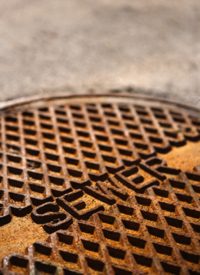
In an effort to tackle emissions of carbon dioxide (CO2), Belgium is considering a radical and controversial proposal to dissolve human bodies and dispose of them in sewage systems, according to international news reports. Undertakers hope to have approval in a few months.
The “resomation” process — as it’s called — works by using a combination of chemicals, high temperatures, and high pressure. In a matter of hours, the body is dissolved, with nothing but brittle bones left to be crushed. Then, some of the residue is turned into a powder that can be placed in an urn. The rest is flushed into the sewage system and "recycled."
One of the process’ main “selling points” is that it’s “environmentally friendly” and reduces a person’s so-called “carbon footprint.” Apparently the cremation of a dead human releases almost 600 pounds of CO2 into the atmosphere. In Belgium, concerns about an alleged lack of burial space are also factoring into the discussion.
“Resomation offers a new, innovative approach which uses less energy and emits significantly less greenhouse gasses than cremation,” explained founder Sandy Sullivan of The Resomation Company. “Burial space is running out and I have had lots of people contact me whose loved ones have chosen resomation.… It’s a highly sensitive subject but I think the public are ready for it.”
However, not everyone is thrilled at the prospect of dissolving bodies. "In Belgium it will be hard to introduce. We know about cremation, but not this new process," Belgian undertaker Frederik Vanbellingen told Sky News. "I think a solution to the problem of the fluid also needs to be found. Relatives could find pouring their loved ones away psychologically difficult."
Another proposed use for the liquid residue: fertilizer. Of course, the suggestion has inevitably led commentators on the Internet to highlight a macabre comparison with “Soylent Green,” where dead people were turned into human food in a 1970s science-fiction film.
But some people are apparently ready for resomation — especially radical environmentalists. “There are an awful lot of people on the planet, and modern methods for disposing of human remains aren’t exactly earth-friendly,” claimed Stephanie Rogers with the Mother Nature Network, noting that the process uses 80 percent less energy than standard cremation. “As world leaders struggle to deal with the immense specter of global warming, solutions like Resomation may become more palatable.”
In the United States, six states — Colorado, Maine, Florida, Maryland, Oregon, and Minnesota — have already legalized resomation. Others are considering it now. And Canada has purchased some “resomaters” as well.
In the European Union, news reports claim that the European Commission must still approve the procedure because of concerns about certain waste being dumped in the sewage system. But at least Belgium, the United Kingdom, and the Netherlands are reportedly considering the idea.
"It looks normal, much the same chemicals you would find coming from a washing machine,” said an E.U. spokesman cited by the Irish Examiner. “Our only interest is to ensure that the proper sewage treatment facilities are in place but we have no role in funerals — that is purely a matter for member states."
At least one Catholic ethicist has concluded that resomation is "morally neutral." But other Catholic leaders have condemned the practice and urged against its legalization. “Every human person has an innate dignity that calls for the remains of every deceased person to be treated with the utmost respect. Reverence and respect for human remains are important principles which have been reflected in society down through the ages,” wrote Chancellor Diane Murphy Quinlan of the Roman Catholic Diocese of Manchester and Bishop John McCormack in a letter to New Hampshire legislators last year.
“Resomation is a euphemism for the disposal of a human body,” noted the letter. “While the bone ash is returned to the decedent’s family, the liquid substance that is produced in the process is flushed away, usually into the public waste system. The chemical dissolution of human remains in which a large portion of the human body is flushed down drains is undignified and disrespectful at the most basic level.”
Bloggers have also blasted and ridiculed the idea. “I suppose we could have a moving ceremony when we pull the chain and send Granny on her way and every year place some flowers at the local sewage-processing plant,” noted a retired engineer for the blog Climate Common Sense. “A wall erected there where an engraved plaque could be attached would also be a nice touch.… Of course you have to look on the bright side because the green bureaucrats have not yet started calculating carbon footprints of Nursing homes or the benefits to Gaia of premature liquefaction of the feeble Grannies of this world.”
Though probably not thinking of “Gaia” at the time, almost half of Belgium’s nurses involved in euthanasia admitted to euthanizing human patients without the patients’ consent, according to a study cited by the Daily Mail. So despite the dark humor, the blogger might not have been that far off.
Resomation may be a “greener” alternative to cremation or burial, but at least for now, it is also much more expensive. A single resomater machine costs more than $400,000, according to news reports. Whether the idea catches on in Europe — if and when the E.U. offers its approval — remains to be seen. But the debate about resomation will surely continue for a long time to come.


